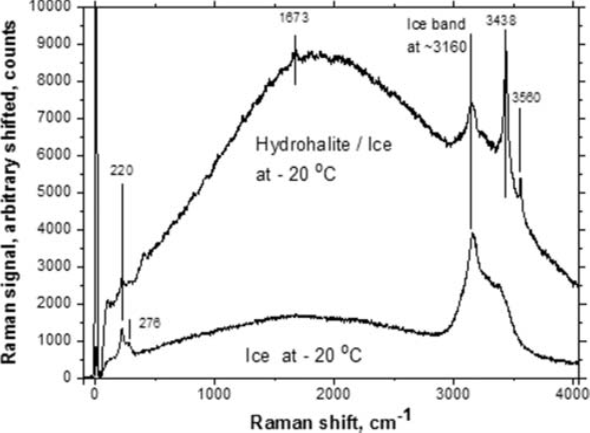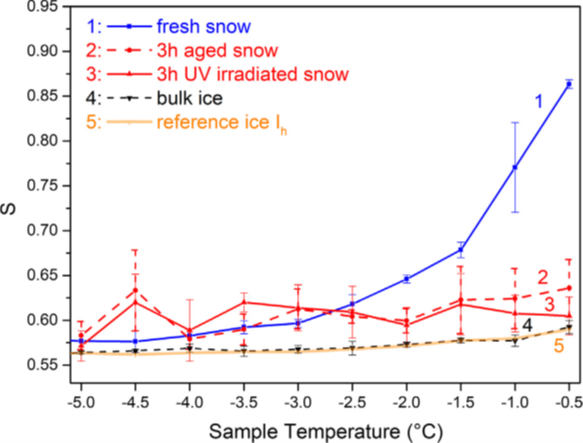While it is often regarded as beautiful and serene, the familiar sights of fallen snow and log fires associated with the winter season are accompanied by familiar dangers like avalanches and icy roads.

Image Credit: B&W Tek
Raman spectroscopy is a valuable tool in allowing people to enjoy spending time outdoors in winter while minimizing risks to their safety and wellbeing. This article looks at how B&W Tek spectrometers empower research into improving safety during winter conditions.
The US Census Bureau states that the average American completes a 27.6-minute commute to work in each direction.1 Places that regularly reach freezing temperatures typically experience winter roads slick from slush and ice, significantly increasing the chances of accidents.
Ice on roads is typically addressed via the application of Sodium Chloride (NaCl), more commonly referred to as ‘table salt.’ NaCI is an effective tool in melting ice, but it is also known to contaminate the environment and have corrosive effects on infrastructure and vehicles.2
Another lesser-known risk of applying too much NaCl to icy roads is the formation of hydrohalite (NaCl•2H2O) – a substance that precipitates out of solution and causes water to refreeze at very low temperatures.
This leads to reformed ice, which is actually resistant to de-icing via conventional NaCI, resulting in very slippery roads and reintroducing the risks associated with these.
Distinguishing between normal ice and hydrohalite is difficult when using visual inspection alone. This introduces new challenges, as individuals and authorities cannot be sure when to apply a different de-icing chemical to eliminate risks from the presence of hydrohalite.
The Department of Chemistry at the Technical University of Denmark leveraged the analytical power of an i-Raman Plus 532 to help solve this issue. The team discovered that the Raman profile of hydrohalite could be clearly differentiated from that of regular ice (Figure 1).
Using Raman, road crews would be able to identify hydrohalite and employ a different de-icing chemical where appropriate. The team had confirmed that by leveraging the power of Raman spectroscopy, roads could be made safer during the cold winter months.3

Figure 1. Raman spectra of hydrohalite and ice excited with 532-nm laser equipped portable B&W Tek i-Raman Plus3. Image Credit: B&W Tek
Raman spectroscopy has also been employed in the study of freshly fallen snow – particularly how this weathers over time and the impact of weathering on the snowpack’s mechanical stability.
This work was undertaken by teams from the Departments of Energy and Chemistry at the Polytechnic University of Milan and LAMBE CNRS.3,4
Their research involved acquiring Raman spectra of various sizes of snow grains that exhibited different morphology. They did this using an Exemplar Plus spectrometer with an excitation laser operating at 532 nm.
The teams discovered that by studying changes in the Raman profile of the OH bond at various temperatures resulting from the change in morphology (Figure 2), it was possible to distinguish the different snowpack layers.4
Researchers successfully detected critical surface and in-depth morphologies that were closely linked to slab avalanche formation. This technique could also offer new insight into hidden dangers beneath the surface of the snow.

Figure 2. Calculation of the S-value (ratio of OH Raman peak at different temperature) for fresh snow (1), aged snow (2) UV irradiated snow (3), bulk ice (4), and reference ice (5)4. Image Credit: B&W Tek
Raman systems from B&W Tek are being actively employed by researchers working to improve safety throughout the winter months, allowing people to enjoy safer holidays and outdoor activities in cold weather.
References
- Bureau, U. S. C. Census Bureau estimates show average one-way travel time to work rises to all-time high. https://www.census.gov/newsroom/press-releases/2021/one-way-travel-time-to-work-rises.html (accessed Jan 24, 2022).
- Winter is Coming! And with it, tons of salt on our roads. https://www.epa.gov/snep/winter-coming-and-it-tons-salt-our-roads (accessed Jan 24, 2022).
- Berg, R. W. Raman Detection of Hydrohalite Formation: Avoiding Accidents on Icy Roads by Deicing Where Salt Will Not Work. Applied Spectroscopy Reviews 2017, 53 (6), 503–515.
- Maggiore, E.; Galimberti, D. R.; Tommasini, M.; Gaigeot, M.-P.; Ossi, P. M. The Contribution of Surfaces to the Raman Spectrum of Snow. Applied Surface Science 2020, 515, 146029.

This information has been sourced, reviewed and adapted from materials provided by B&W Tek.
For more information on this source, please visit B&W Tek.